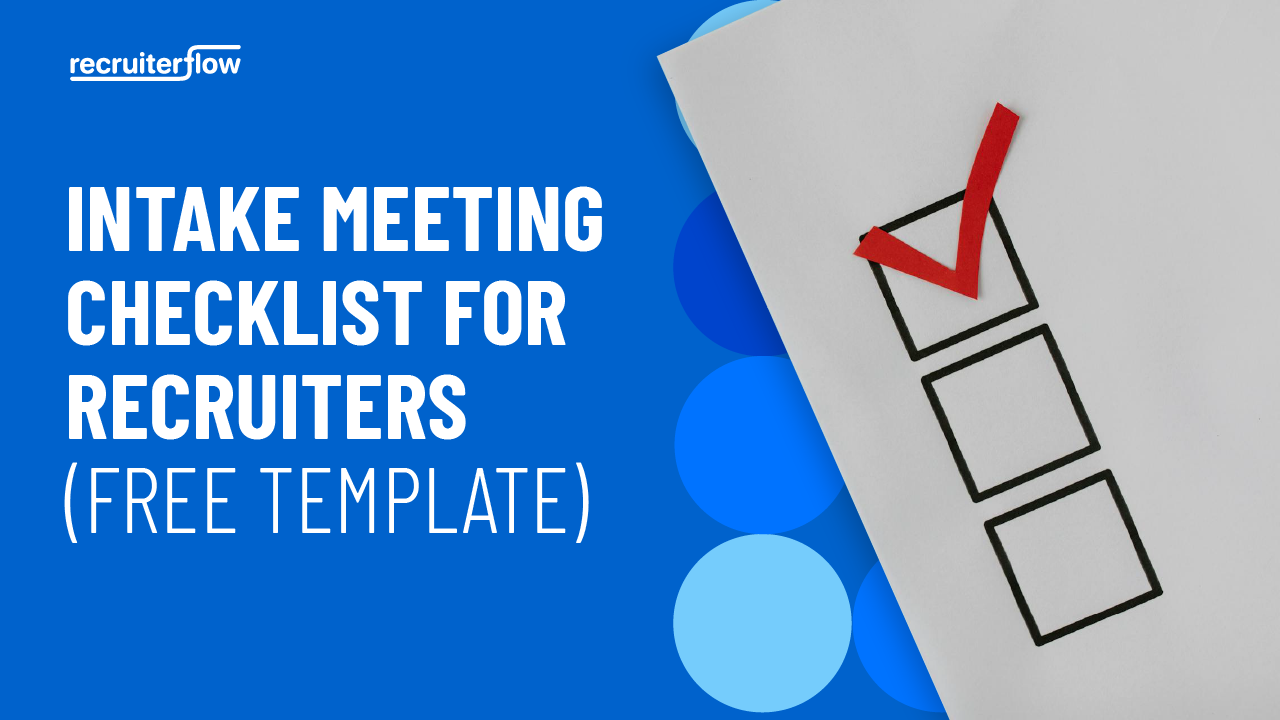
Day to Day Tasks Every Recruiting Firm Should Automate
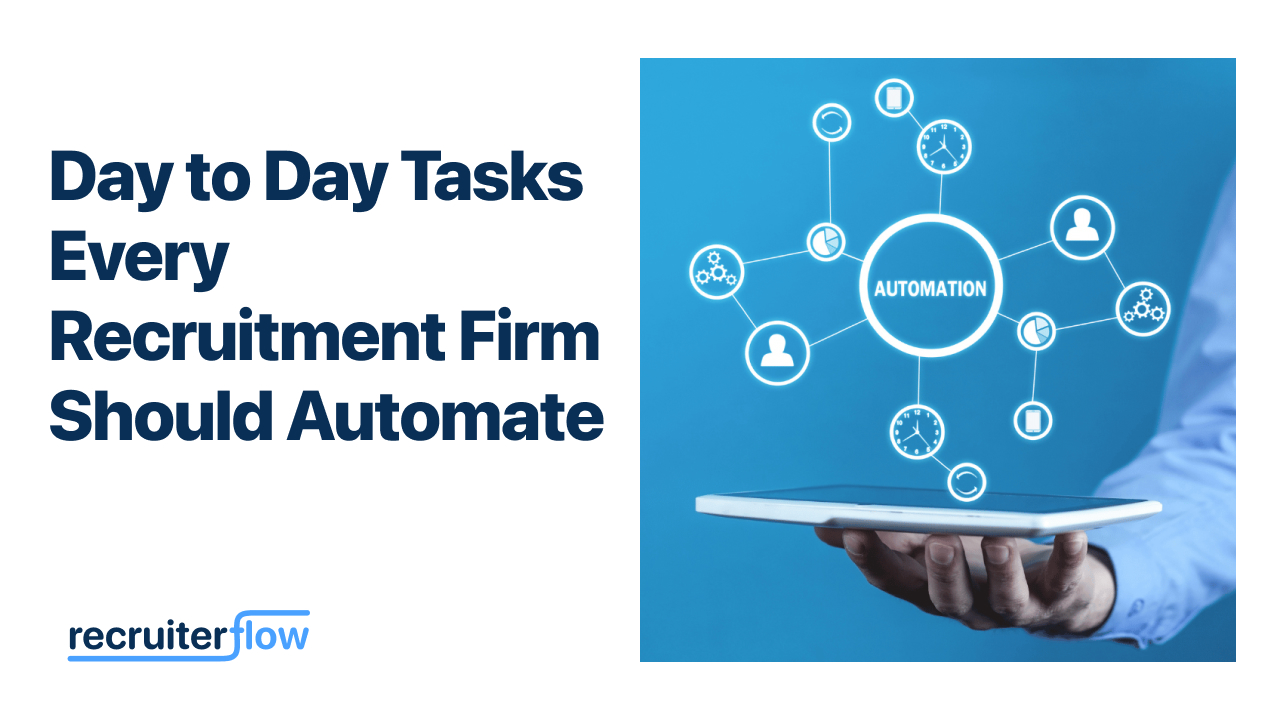
In an industry where time is of the essence, recruitment firms face the challenge of condensing the average recruiting cycle, which typically spans four weeks. This time frame is often a critical factor for both clients and candidates. Enter Recruitment Automation, a game-changing force that has the potential to drastically trim down this cycle, revolutionizing the way recruiting businesses operate.
In this blog post, we’ll explore the strategic implementation of recruitment automation in day-to-day tasks to expedite the recruitment process and deliver exceptional results.
Why is automation pivotal in the recruitment business?
By automating repetitive responsibilities, recruiters can devote their energy to activities that generate revenue.
By incorporating automation into daily workflow, headhunting firms can alleviate stress, enhance productivity, and achieve superior outcomes in their hiring processes. 30% of recruiters experience reduced stress levels when they access additional recruiters or recruiting resources, including automation software.
Let us explore some intriguing recruitment automation examples without wasting another moment.
Tasks Every Recruiting Firm Can Automate In Recruitment
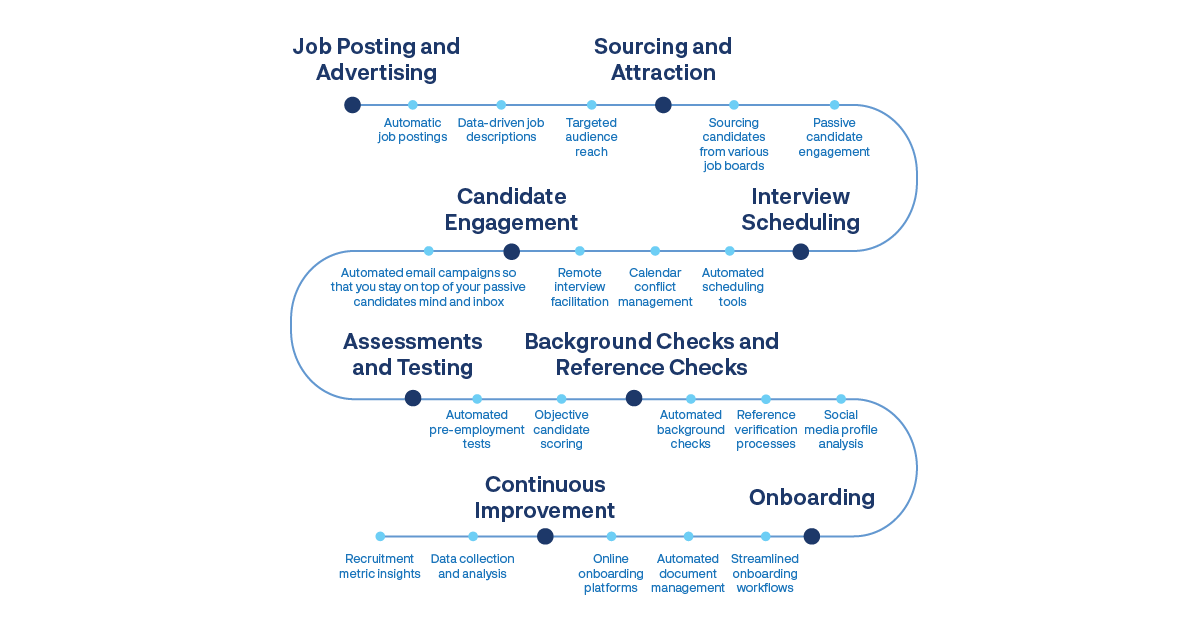
Automatic Job Posting
According to statistics, recruiters invest up to 30 hours per week in sourcing new candidates, with a substantial portion of this time dedicated to inefficient job distribution.
Automated job distribution stands out as a pivotal solution to enhance a recruiter’s productivity. It empowers recruiters to effortlessly post job listings across multiple channels with a single click. It also helps recruiters to monitor all subsequent actions through a unified interface.
With Recruiterflow you can not only post jobs on multiple job boards in one click but also create job descriptions within minutes. Check out the video below.
Want to know more about Recruiterflow – Talk to our experts now
Resume Parsing
Recruiters receive a flood of resumes every day. Sorting through each one manually is a real hassle. That’s where resume parsing software steps in to make things a breeze.
With this tool, recruiters can say goodbye to hours of manual work, allowing them to focus on more important tasks.
A resume parser tool is often included with your Applicant Tracking System (ATS). Its primary function is to analyze the content of a CV or cover letter, converting it into organized data. This structured information is easier to manage and store, significantly expediting the hiring process. For instance, when dealing with a civil engineering cover letter, the parser can quickly identify relevant skills and experience, making it easier to match candidates with suitable job openings.
Background Checks
Performing comprehensive background checks is a critical and indispensable step in the hiring process.
It is estimated that nearly 40% of individuals provide misleading or false information on their resumes, making background checks essential for verifying the accuracy and truthfulness of candidate-provided details.
By conducting these checks, recruiters can ensure that candidates possess the qualifications and experience required for the position.
Recruiters can use background check software for this process. This software enables recruiters to thoroughly examine a candidate’s background, including criminal history, educational and digital credentials, and employment records.
This automated approach guarantees that candidates are devoid of any past illegal activities and possess the qualifications and experience for the role.
Pre-employment tests
Properly vetting candidates can present challenges. Are they misrepresenting themselves on their resumes? Do they accurately gauge their skills? Or are you on the verge of hiring an unqualified candidate?
Getting it wrong risks making a wrong hiring decision. Even worse, you’ll need to restart the hiring process for the role.
The solution? Generate a QR code with a link to utilize talent assessment tests to make hiring decisions based on objective and reliable data.
Talent assessment testing simplifies various talent acquisition trends. According to Testgorilla Skills-Based Hiring report 92.5% of organizations employing pre-employment tests experienced a reduction in mis-hires.
To know about different talent assessment tests, click here
Interview Reminder
Lateness without prior notice or explanation is considered the worst interview offense by nearly 84% of interviewers. So when it comes to client interviews, recruiters should ensure candidates attend them on time.
To facilitate this, Calendar Integration, Email, and text message automation tools are valuable in updating candidates and hiring managers about the upcoming interview process. In fact, automated appointment reminders have become a staple in ensuring timely attendance and streamlined scheduling processes in various industries.
Additionally, you can deploy chatbots to send automated reminders via platforms like Slack or Microsoft Teams and can even assist in rescheduling interviews if necessary for either party involved.
Also, check our blog on recruiting statistics.
Regular updates to candidates about the status of their job application
Maintaining a positive candidate experience hinges on providing timely updates after the interview process. For job seekers, frustration ensues when recruiters fail to communicate, leaving them feeling “ghosted.”
Hence, it is imperative to ensure regular updates to keep candidates informed.
Recruitment CRM software provides a wide range of valuable features that empower recruiters to deliver automated status updates to candidates effortlessly. These updates encompass vital information regarding the comprehensive advancement of the hiring process.
Moreover, the software allows you to conveniently send automated email or text updates, further streamlining communication with candidates.
Onboarding process
Ensuring a prompt and efficient onboarding process is vital once the client has made their final decision. Studies indicate that 50% of new employees contemplate resigning due to subpar onboarding experience.
Staffing/recruitment agencies must prioritize a seamless and engaging onboarding process to retain top talent.
Utilizing dedicated onboarding software streamlines the collection of essential information, such as tax forms, employment contracts, and other vital documents for new hires.
This automated approach ensures efficiency and enhances the onboarding experience, setting a positive foundation for new employees and increasing the likelihood of long-term retention. In general, employee scheduling apps can assist the onboarding process by creating and sharing their work schedules with new employees.
Data Management
Certain industries demand specific credentials to validate the competency and eligibility of candidates for particular roles.
For example, in the healthcare sector, professionals require certifications like Advanced Cardiac Life Support (ACLS), which must be renewed every two years.
Similarly, project managers seek certifications such as the Project Management Professional (PMP), which expires after three years. Recruiting firms must verify that these credentials are kept up to date meticulously.
To streamline this process, tools such as Credential Management Systems (CMS), Learning Management Systems (LMS), and Applicant Tracking Systems (ATS) can be invaluable.
These tools seamlessly integrate with external verification systems, ensuring strict compliance with industry standards.
They also provide timely reminders to candidates, prompting them to update their credentials as the expiration dates draw near.
Follow up with new sales prospects
Consistent and timely follow-up with new sales prospects is crucial for the success of recruiting firms. It fosters relationships, nurtures leads, and enhances the likelihood of converting prospects into clients.
Research reveals that 60% of customers reject offers multiple times before making a purchase decision, underscoring the importance of persistent yet non-intrusive outreach.
Proactive Client Engagement
Regularly connect with existing clients on a monthly basis. Cultivating these relationships can result in more job orders and establish your agency firmly in their memory. Utilize automated emails to check in, inquire about any fresh hiring requirements, or address any service-related issues or quality concerns.
To check out the best recruitment tools for recruitment businesses, click here
Recruitment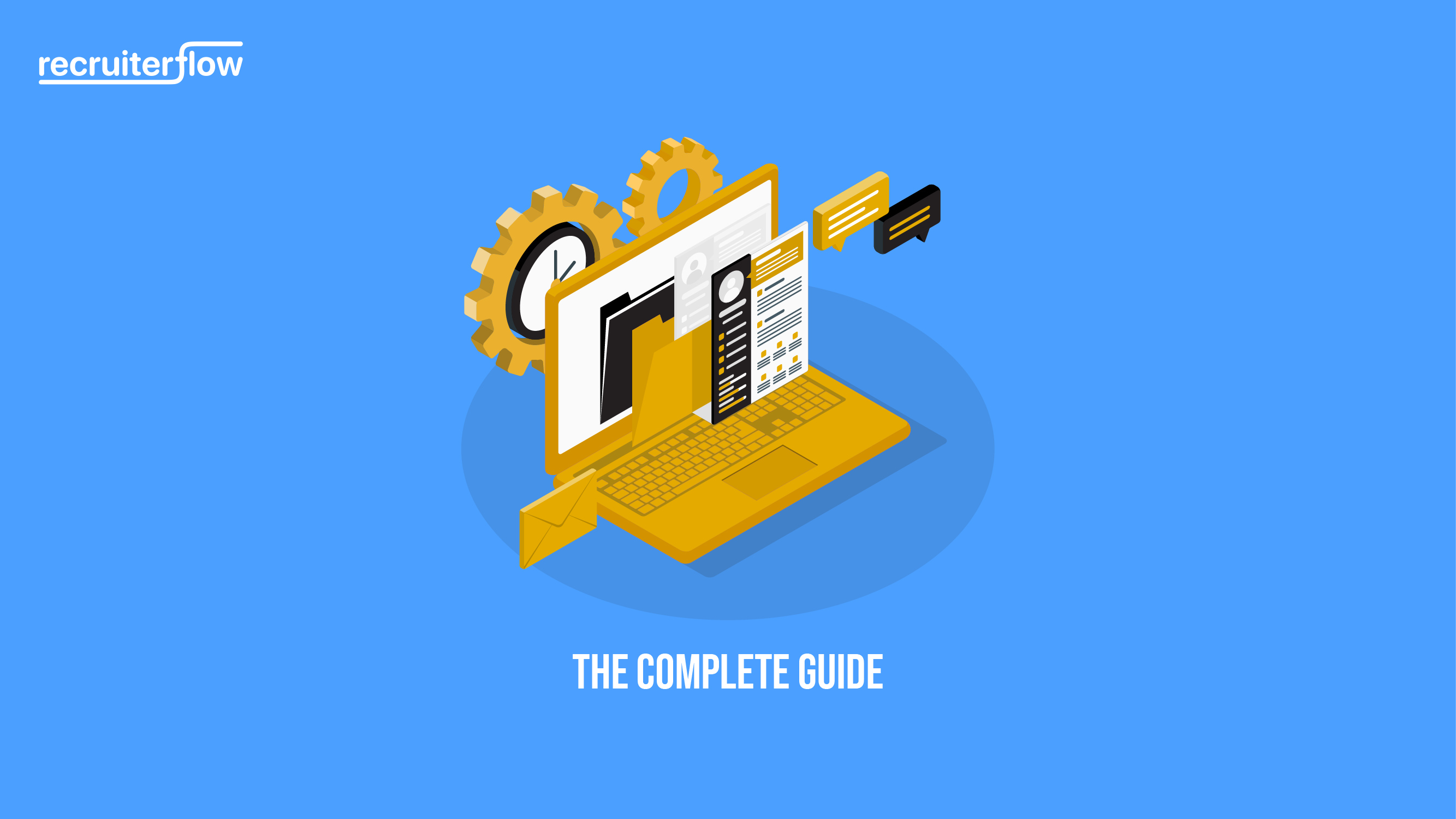
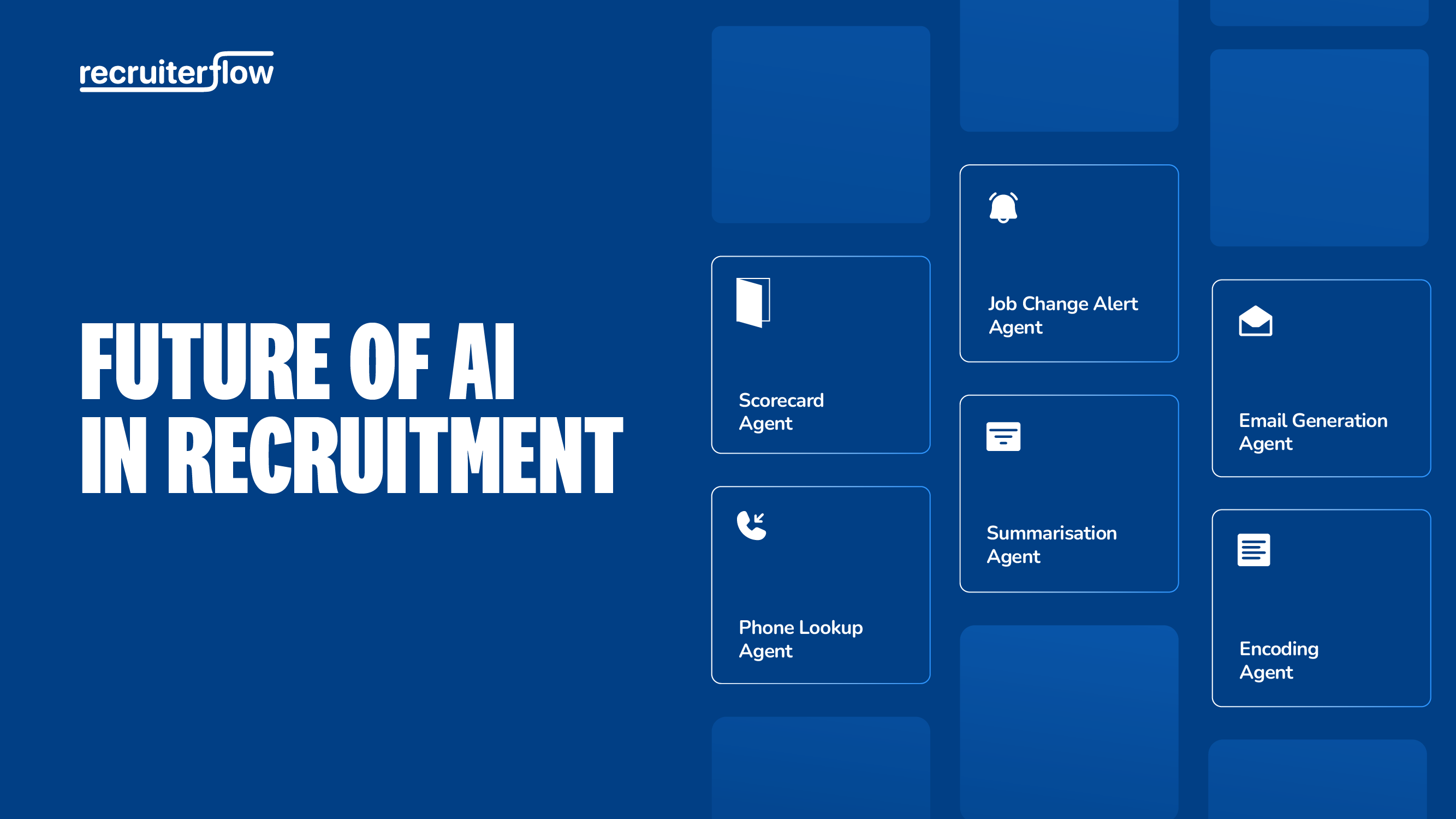




Sagrika Jain